Team:TU-Munich/HumanPractice/Interviews
From 2013.igem.org
Expert Counsel: An overview
All throughout the development process of our PhyscoFilter we got in touch with experienced experts and stakeholders to constantly improve our technical solution and to assess potential users demands on its properties.
1) 4th Water Research Horizon Conference “Water Scarcity and Global change” in Berlin
The main goal of the participation on the 4th [http://www.ufz.de/water-research-horizon Water Research Horizon Conference] “Water Scarcity and Global change” in Berlin on the 25th of June 2013 was to inform ourselves about worldwide water scarcity and global change. We hoped to get inspirations for our outreach and human practice effort. Moreover we were interested in the worldwide practical realization of minimizing “the water problem”. Especially the diverse ways of approach in different countries and the existing solutions were of interest (see Figure 2) to see how our project fits into this scope. In addition to the main speeches of ambassadors from different communities and companies we participated on a workshop session with speeches and discussion called “Water and Soils for Food and Energy - A Question of Technological Development?”.
We realized that it is quite difficult to give a straight answer to this question. J. Bouma (formerly Wageningen University, The Netherlands) answered with “No, not alone, but start with existing technology and go from there”. Whereas R. Ardakanian (United Nations University, Dresden) just said “yes” after his speech. But not only the answers on the topic question differed, also the point of view concerning to the worldwide water problem, scarcity and the definition of common water diverged. In his speech, R. Ardakanian placed water in context with waste. He said that waste can be a resource for the production of food and energy and must contribute as recycled waste in technology. According to E. Adar the goal and challenge for the next generation is (Ben Gurion University, Negev, Israel) minimizing the water use and costs. To him it was evident that water is a synonym for food and a commodity, not a resource like gold.
Furthermore M. Lange (The Cyprus Institute, Nicosia) presented his speech titled "Ways about Climate Change and Energy-Water Nexus in the Mediterranean". A. Porporato (Duke University, NC, USA) gave a lecture on the role of ecohydrological variability in productivity and sustainability of ecosystems.
The following general speeches about the water scarcity and climate change, informed the audience about different present projects to reduce the water scarcity. G. Teutsch (UFZ Leipzig) who opened the conference talked about a “quick start” to reduce the water scarcity, which sticks together with the urgent topic of climate change. The main statement of the second speaker's speech ,P. Krebs (TU Dresden), was that not visions yield viable results, but only excellent concepts, new projects and community action. That the water topic has also an important role in politics, was approached from F. Holzwarth, (BMU Bonn) whose goal is forming a “water alliance with new individual faces”. He stated that in contrast to the climate change, the water scarcity isn’t a major topic in politics, because “disasters drive politics”. In his speech U. Weber (DFG Bonn) picked out science (project, implementation and ideas) and society (public, politic) in relation to water scarcity and climate change as central themes. In turn, J. Sheffield (Princeton University, USA; see Figure 3) broached the issues of the transition between drought and floods.
The theoretical aspect of controlling natural water's quality in a mathematical model was presented by G. Bidoglio(EC-JRC IES Ispra, Italy; see figure 4). Implemented Projects are the Joint Research Project SMART (integrated Water Resource Management in the Lower Jordan Valley) and the Guanting Project (sustainable water and agricultural land use in the Guanting watershed under limited water resources).
In summary the visit of the conference made us realize that water scarcity and water quality are in fact vital problems that already attract much attention in academic circles. In contrast, we did not know that the global water situation is such a multifaceted subject and we were stunned by the broad range of subjects that were covered during the conference. As the conference took place at the beginning of our project, the impressions we received from the conference helped us understanding what problems we should address when talking to a broader audience in our subsequent human practice efforts. Moreover the presentation of currently happening innovative projects inspired us in the design of our filter prototypes.
2) Workshop "Drugs in the Environment" in Berlin organized by the RCDS
At the end of May we joined the "Drugs in the environment" conference that was organized by the [http://www.rcds.de/ RCDS] (which is the youth organisation of the CDU, the currently governing political party in Germany) and the [http://www.vfa.de/ German Association of Research-Based Pharmaceutical Companies].
During this discussion meeting we had the opportunity to meet and discuss with several experts as well as with representatives of leading German pharmacy companies such as Bayer and Novartis. The main focus of this discussion was on the point whether pollution of the environment by pharmaceutic substances is a considerable problem for our society. Furthermore whether Germany is going to invest money to reduce this pollution and who is responsible for financing these measures. The conclusion of this conference was that in Germany there is no acute danger for mankind by contamination of the environment by pharmaceutic substances. In contrast the lowering of the detection limit for several substances leads to an awareness that there is contamination caused by mankind and that several people are not willing to accept this pollution.
3) Biotechnology 2020+ Conference of the Ministry of Research and Education in Berlin

For the third year in a row the German Ministry of Research and Education invited all German iGEM Teams to join the "[http://www.biotechnologie2020plus.de Biotechnology 2020+ conference]" in Berlin on June 27th. “Which products and biotechnological processes are fundamental? “, “How will the next generation accept the biotechnological processes?” and “Which projects are already initiated?”. Experts in the fields economy, politics and science and the German iGEM teams came together at the conference and tried to answer these questions. In his speech, Dr. Helge Braun (parliamentary State Secretary of the BMBF) emphasized that a creative teamwork with an own developed "language" is necessary. He introduced the new biotechnological ideas: biological implants, biomimetic desalination plants and microbial fuel cells. In the first discussion round about the topic “result of the previous activities and action recommendations for the continuation of the initiative "Biotechnology 2020+ conference", five ambassadors of five research institutions (Frauenhofer Society, Helmholtz Association, Max-Planck Society, Leibniz Association, TU Braunschweig) (see figure 5) presented their recently implemented ideas: printable biotechnology, cell-free bioproduction and synthesis of novel therapeutics. Exemplarily Prof. Dr. H. Jäckle (Max-Planck-Community) introduced the research network for Synthetic Biology MaxSynbio. The second discussion treated the subject "Open Source in the Biotechnology”. After the presentation there were workshops on the topic “On the way to a Biotechnology 2020+”. Additionally the German iGEM projects 2013 were exhibitied (see Figure 6) and the five research institutions presented their recent research projects.
In summary the participation informed us about the practicable operated novel biotechnology ideas. It enabled our cooperations and gave us an insight into projects from market-leading research institutions in Germany. Furthermore we got in contact with other iGEM teams which paved the way for an iteration of the German iGEM day.
4) Visit of the Helmholtz Center for Environmental Research (UFZ) in Leipzig
When we visited the Helmholtz Zentrum of Leipzig [http://www.ufz.de/index.php?en=2540 UFZ] on the 26 th of June 2013, we had three objectives. We wanted to present our project, get another impartial opinion concerning our project idea and project implementation and lastly acquire general information about practical phytoremediation. Dr. Kuschk and Dr. Müller are chair members of the environmental biotechnology section and attend to phytoremediation or rather bioremediation (see figure 6). Their research focus lies in the area of zoonosis that means the interplay between plants and microorganisms. The plant acts with the root system as a carrier to quantify the microorganisms which dispose nitrate, sulfur or toluol. According to Dr. Kuschk genetic engineering work isn’t possible at the UFZ, because of the few personnel at the moment.
Dr. Müller gave us a guided tour through the laboratories. (see Figure 7) Later on we had two conversations with experts on different issues concerning our project. Dr. Müller gave us very helpful annotations about our effectors. We were explained the sense of amplifying the resistance gene EreB in environment in relation to the biotechnological benefit. He informed us about the costs of blue light. Furthermore he alluded that we had to consider the enzyme specification in order to find the benefit of extincting erythromycin to clean water. Another point was the use of cathecholdioxygenase. According to Dr. Müller, depletion of catechol through microorganisms is a very effective process. So our next step was to show the efficiency of the depleting catechol through moss.
The main topic we discussed with Dr. Kuschk was the application of our project idea in practice, outside the competition framework. Dr. Kuschk was in doubt about the practical implementation. His assessment was based on his comprehensive experiences with concepts and conversions he developed. In his opinion the costs, the low concentration of polluting substances and the small contact surface have negative effects on the projects application. When it comes to the immobilization of substances, he prefers biofilms to membrane bounds. He also criticized our choice of degraded substances. In his opinion fecal substances are the cause of the high death and diseases rate in less developed countries. We explained that we chose harmful substances, according to the WHO, to establish our filter, as we'd like to show the degradation and bioaccumulation of them. In general he considered our project as basic research and not as practical application. In summary the visit of the UFZ enriched our knowledge in the issue of molecular genetics and gave us an idea how further project thoughts could look like. The guided tour through the laboratories of UFZ showed us execution examples of working phytoremediation concepts.
5) Expert Box: [http://www.pieris-ag.com Pieris AG]
The [http://www.pieris-ag.com Pieris AG] is a biopharmaceutical company founded in 2001 which is commercializing the anticalin production technology. Anticalins are designed to bind proteins that are a promising alternatives to antibodies. These are mainly used in red biotechnology. They are, for example, used in tumor therapy. As these engineered binding proteins can be directed against nearly every chemical structure, they are also an interesting tool for phytoremediation. Our idea was to apply the successful anticalin technology in a totally different context, namely for the detoxification of aquatic ecosystems. We contacted the Principal Scientist of the [http://www.pieris-ag.com Pieris AG] and they are confident that a meeting will be possible until the regional Jamboree in Lyon.
6) Expert Box: Prof. Reski (Freiburg University)
When we had chosen phytoremediation as our topic for this year's competition it became clear soon that Physcomitrella patens is a great chassis which could bring iGEM closer to the real world applications we are looking for. For this reason we contacted Prof. Dr. Reski who is a worldwide expert on Physcomitrella patens and especially its biotechnological application. He was very kind and liked our idea from the first moment on. Especially when we told him to introduce his Physco to iGEM. So he offered us help where ever we would need it. In the end we traveled five times to Freiburg (350 km) with different team members to perform the transformations in his lab. Fetching plasmids which are known to be functional in Physcomitrealla patens or just to discuss with him or his co-workers. We could win him as an advisor for our team. That is especially pleasant as iGEM starts bringing together universities and scientific groups from different places and and our iGEM team was not restricted to our own university.7) Visiting the iGEM Team Freiburg 2013
During our transformation experiments at Prof. Reski's lab we spent more than one evening with the iGEM team Freiburg and had for example a very delicious barbecue and an interesting scientific exchange. Thank you a lot for your hospitality, congratulations for your success in Lyon and see you in Boston!
8) Expert Box: Greenovation (Freiburg)
In September we went on a road trip to visit interesting companies and experts to get some consultation on our plans. As there is a biotech company which successfully uses Physcomitrella patens as a production organism for therapeutic proteins it became clear that we had to meet a responsible person of this company. Dr. Schaaf, the Principal Scientist of [http://www.greenovation.com/index.html Greenovation] invited us for a discussion and subsequently he showed us the production facility and the other labs of Greenovation. During the meeting we discussed their work flow for Physcomitrella and ours. We talked about production rates of therapeutic proteins and learned about its cultivation conditions in a bioreactor as well as in nature. During the discussion we also considered ordering the transformation of PhyscoFilter plants (so calles BryoTechnology). This hypothetical collaboration would have been possible and would have cost us around 50,000 to 70,000€ per effector. The price would have included the DNA preparation, transformation and expression analysis of 1000 clones. Beside the possibility of a collaboration with PhyscoFilter the company also holds patents which could, in theory, block the application of Physcomitrella for commercial phytoremediation. In this case it would become necessary to buy a license for the usage of transgenic phycomitrella plants. Other experts we have consulted can be found in our Advisory Board.
9) Expert Box: Prof. Posten (KIT Karlsruhe)
During our road trip we talked to Prof. Dr.-Ing. Clemens Posten, who is head of the [http://bvt.blt.kit.edu/ Institute of bioprocess engineering] at the Karlsruhe Institute of Technology (KIT). During our visit we were shown the institutes's bioreactors and Prof. Posten gave us an idea of how a symbiosis between plant and technology can look like. In the past his group worked on a collaboration project with Prof. Dr. Reski (see our Advisery Board) on biological process engineering for Physcomitrella patens. As part of this discussion we figured out several important parameters to control and possible problems to solve in order to successfully implement our PhyscoFilter.
Read more about the results of this consultation.
10) Visiting the iGEM Team Heidelberg 2013
On our road trip we also spent an evening with the iGEM team Heidelberg 2013. At first they told us that they were too busy with experiments but in the end they found 3 team members who showed us their lab and the gorgeous city of Heidelberg. Thank you a lot and see you in Boston!
11) Expert box: Bestmann Green Systems (near Hamburg)
[http://www.bestmann-green-systems.de/ Bestmann Green Systems] is an engineering company which offers commercial solutions for embedding vegetation in aquatic ecosystems. As this is a major point of our implementation project we also talked to this company (because of the actual distance a visit was not possible). This company also sells swimming raft devices which allow the cultivation of plants on free water. This technology was highly interesting also for our business model in which [http://www.bestmann-green-systems.de/ Bestmann Green Systems] could be a potential collaboration partner.
12) Discussion of our Project with Dr. Christoph Then from Testbiotech
Dr. Christoph Then is a recognized expert on risk assesment in the biotechnological field and the CEO of the [http://www.testbiotech.org/ Testbiotech registered association]. Amongst many other engagements, he has worked as an expert advisor on agriculture and genetic engineering for the Green Party in the Bavarian Landtag (legislative assembly in a German state) and as expert for Greenpeace on agriculture, genetic engineering and consumer affairs. Since our iGEM project deals with Green Biotechnology and since our various implementation ideas include biosafety and GMO release aspects, he was the ideal expert to talk to. We had a very productive and interesting discussion that helped us get a much clearer picture on these aspects as well as on the regulations of GMO authorisation.
 "
"






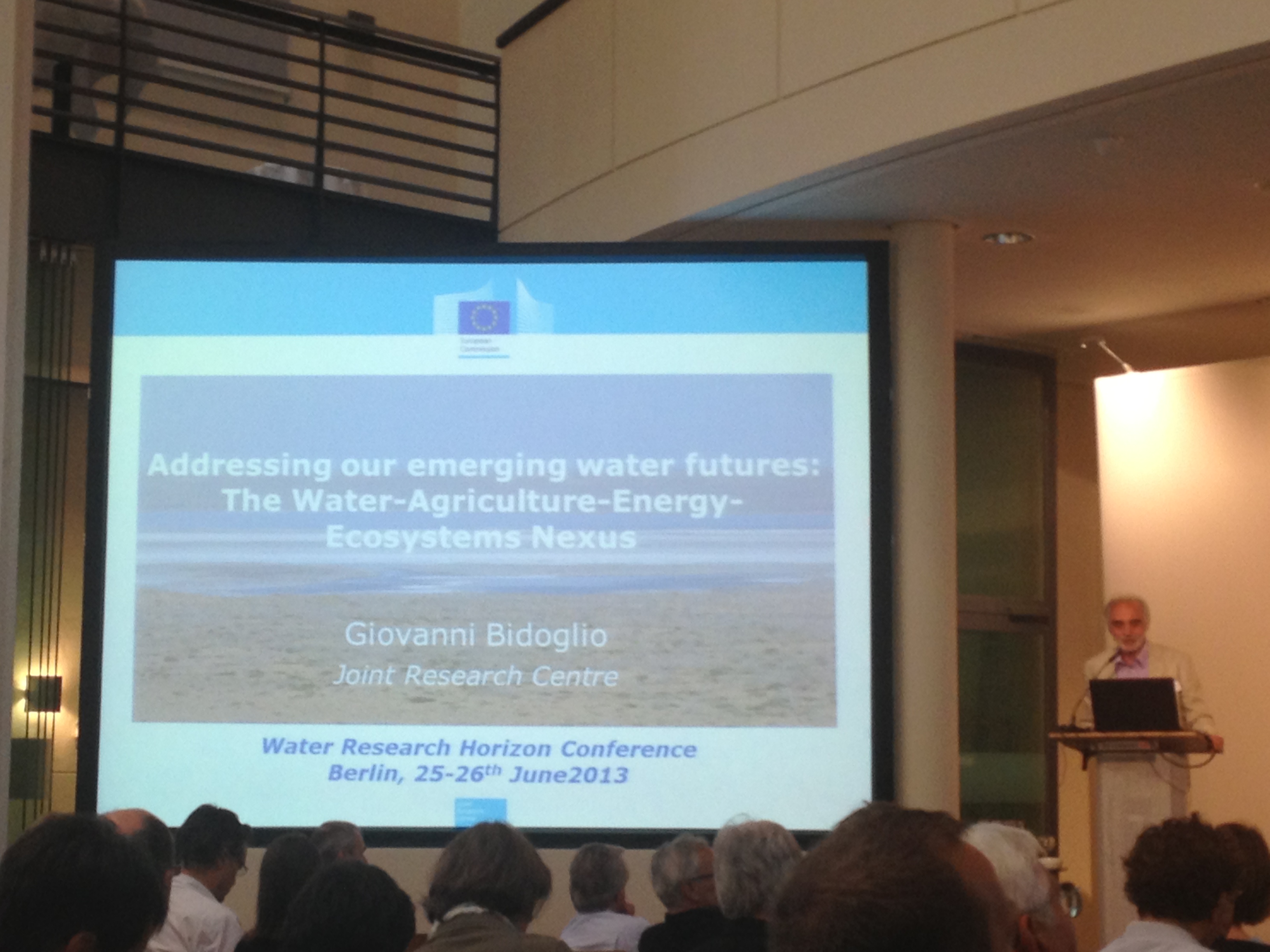


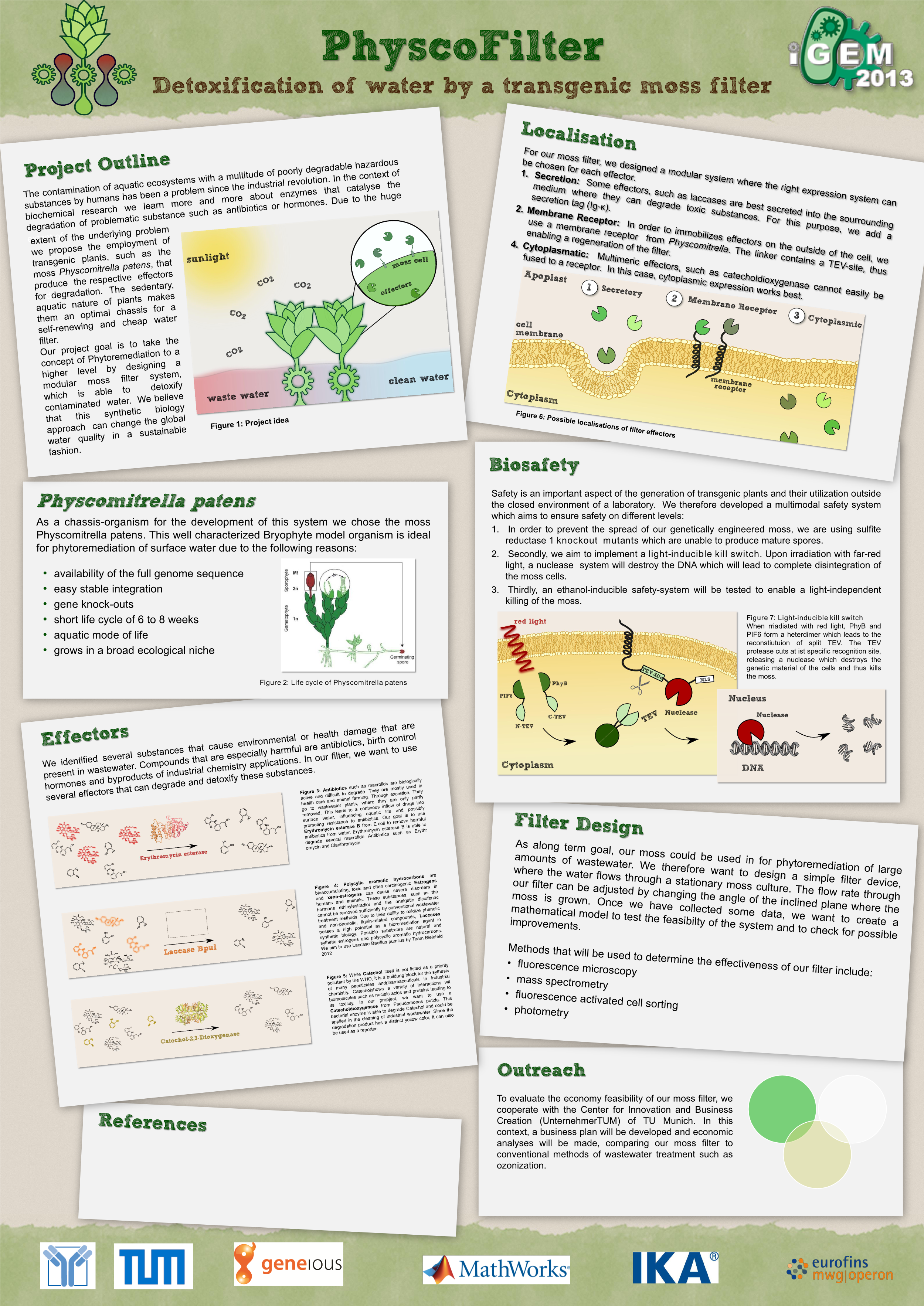
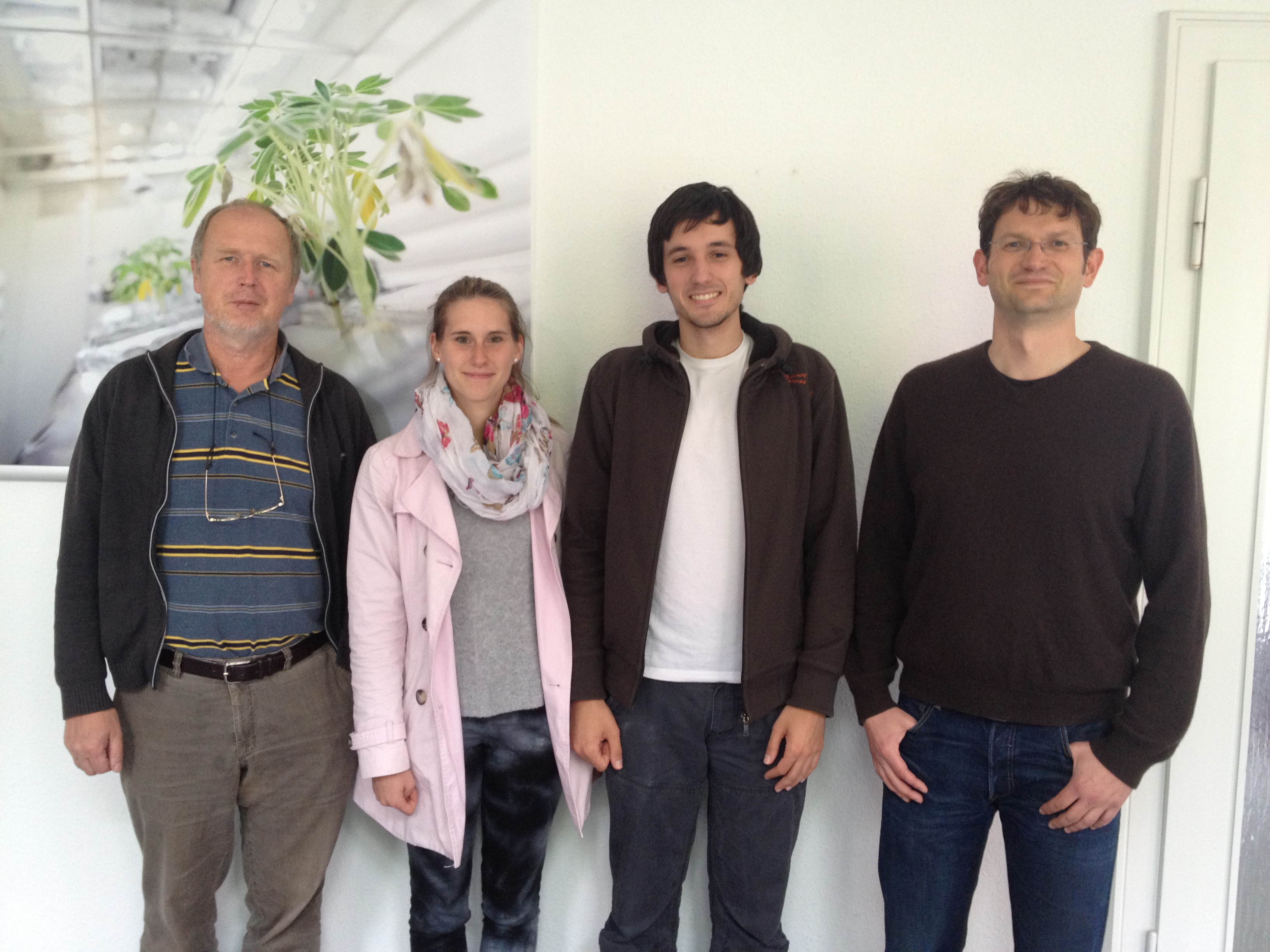


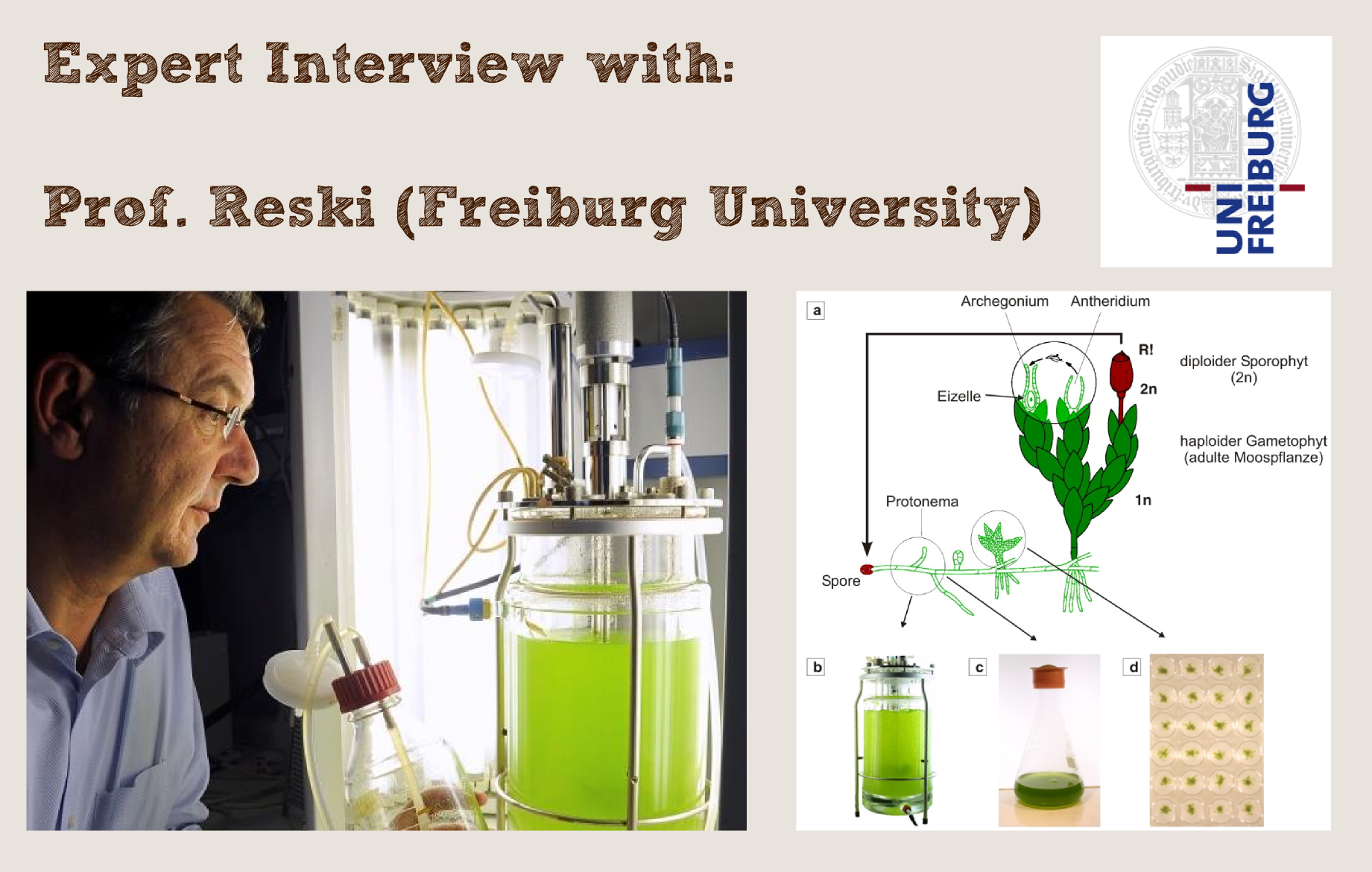

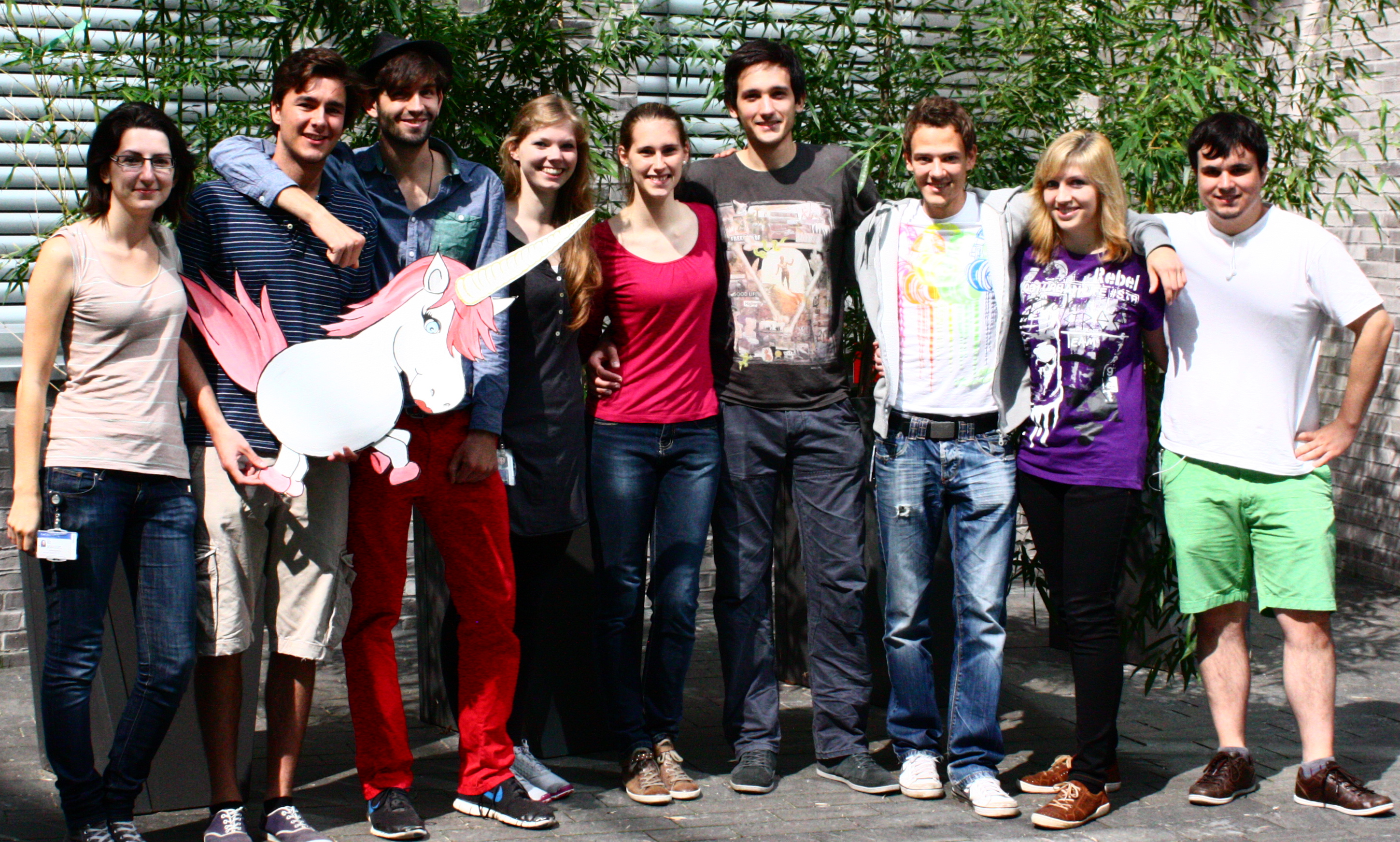










AutoAnnotator:
Follow us:
Address:
iGEM Team TU-Munich
Emil-Erlenmeyer-Forum 5
85354 Freising, Germany
Email: igem@wzw.tum.de
Phone: +49 8161 71-4351